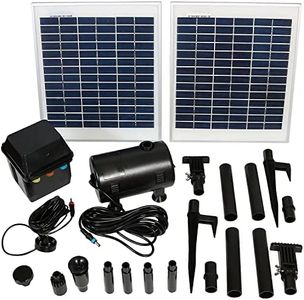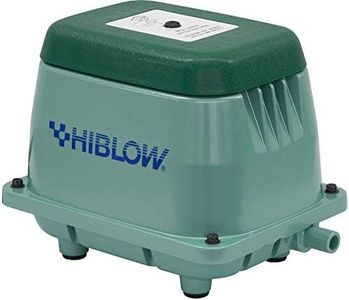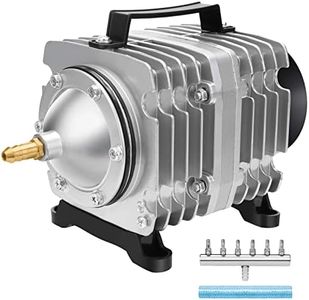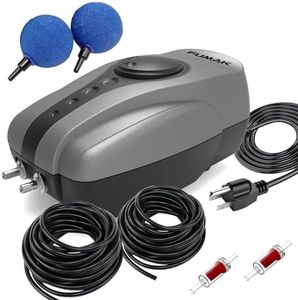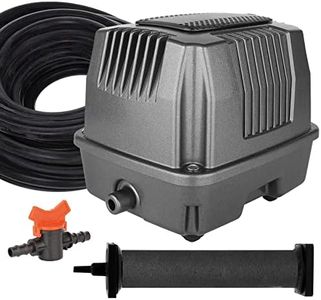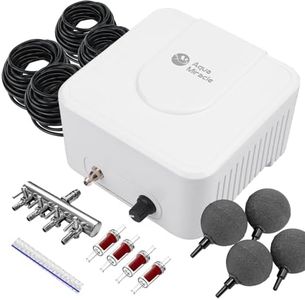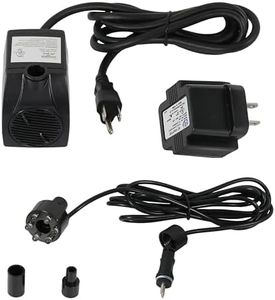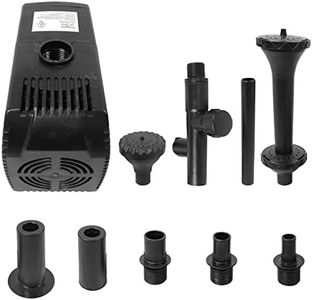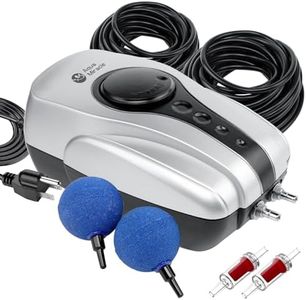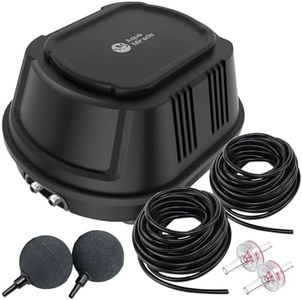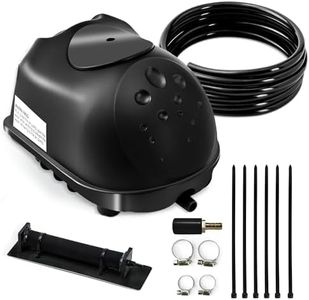10 Best Pond Air Pumps 2025 in the United States
Recommended lists
Our technology thoroughly searches through the online shopping world, reviewing hundreds of sites. We then process and analyze this information, updating in real-time to bring you the latest top-rated products. This way, you always get the best and most current options available.

Our Top Picks
Winner
HIBLOW HP-80 Pond Aerator/ Septic Linear Air Pump
Most important from
2115 reviews
The HIBLOW HP-80 Pond Aerator is a well-regarded option for pond aeration and septic systems, known for its high-quality construction and longevity. It delivers a maximum flow rate of 80 liters per minute, ensuring sufficient air output to maintain healthy oxygen levels in ponds up to 1/2 acre in size. This is particularly beneficial for fish health and maintaining clear water. Being energy efficient with a power consumption of 71 watts, it is designed to be cost-effective over time.
The oil and lubrication-free design simplifies maintenance, and the unit can be rebuilt twice, further extending its lifespan and cost-efficiency. The build quality is robust, with the unit being outdoor UL rated, indicating its durability in various weather conditions. Some users might find the initial setup slightly complex, especially when dealing with the recommended tubing sizes and diffuser types. The noise level, although low, might still be noticeable in very quiet environments.
The included hose connector and clear usage guidelines enhance convenience. Additionally, the one-year warranty provides some peace of mind, although it's relatively short compared to some competitors. This product is best suited for pond owners who need a reliable and efficient aeration solution and are willing to invest in a premium product for long-term benefits.
